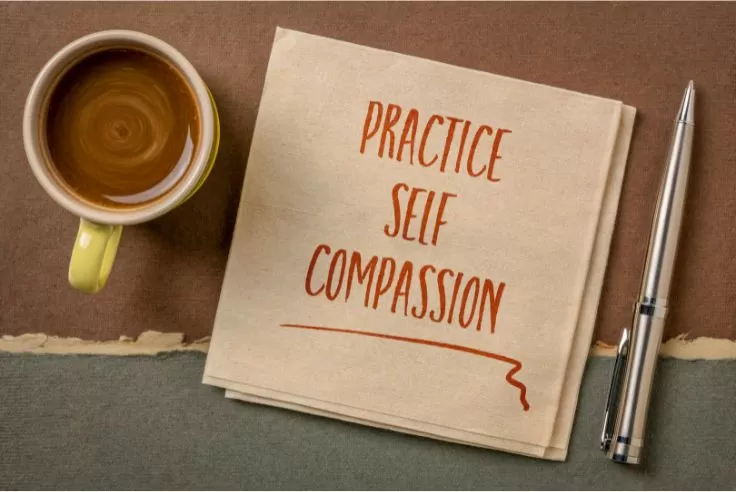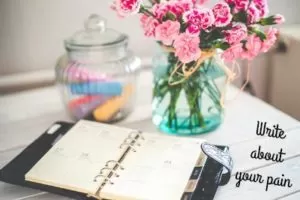You wake up feeling like you didn’t sleep at all.
Your shoulders feel heavy, your back aches, and there’s a knot in your stomach.
As you drag yourself out of bed, you wonder why your body feels so tense, even though nothing “major” happened yesterday.
Sometimes, the physical discomfort we feel isn’t just about poor posture or a bad mattress – it’s emotional pain finding its way into our bodies.
However, you can learn to recognize and release this stored pain for a healthier, more balanced life. Let’s explore how!
Step 1: Understand the Mind-Body Connection
Our emotions aren’t just abstract feelings; they create real physical responses in the body. For example, when you’re scared, your heart races. When you’re embarrassed, your cheeks flush. These physical reactions are your body’s way of processing emotions.
However, when emotions like sadness, anger, or fear are suppressed, your body holds onto them. This can manifest as chronic pain, tension, or even fatigue. Think of it like your body waving a red flag, saying, “I need attention here!”
Step 2: Recognize the Signs of Emotional Pain in the Body
Stored emotional pain doesn’t always scream for attention. Sometimes, it whispers. Let’s explore some typical ways it might show up:
- Chronic tension: Tightness in the neck, shoulders, or jaw can signal stress or unresolved anger.
- Unexplained pain: Persistent back pain or headaches might have emotional roots, especially if medical tests show no clear cause.
- Digestive issues: Anxiety and fear often settle in the gut, leading to stomach aches or digestive problems.
- Fatigue: Feeling drained despite getting enough rest? Emotional pain can sap your energy.
- Difficulty breathing: A tight chest or shallow breathing could indicate suppressed sadness or grief.
Pay attention to these signs. Your body could be trying to tell you something vital.
Step 3: Explore the Source of the Pain
Once you’ve identified the signs, it’s time to dig a little deeper. Ask yourself:
- What was happening in my life when this pain or tension started?
- Am I holding onto unresolved feelings, like anger, guilt, or sadness?
- Are there past events or traumas I’ve avoided dealing with?
Journaling can be a powerful tool here. Get started with journaling prompts to make it easy. Write down your reflections and feelings without critique. Sometimes, writing them down can help you make sense of your emotions.
Step 4: Release the Pain
Releasing emotional pain stored in the body doesn’t happen overnight, but these practices can help:
- Breathing Exercises: Deep, mindful breathing can calm your nervous system and help you release tension. Try this: Inhale deeply for 4 counts, hold for 4 counts, and exhale slowly for 6 counts. Repeat several times.
- Movement: Physical activities like yoga, stretching, or even a simple walk can help release stored tension. Notice how your body feels as you move.
- Express Your Emotions: Cry if you need to. Scream into a pillow. Write an angry letter (and don’t send it). Letting your emotions out in a safe way is incredibly healing.
- Practice Self-Compassion: Be kind to yourself. Remind yourself that it’s okay to feel hurt or vulnerable. Use affirmations like, “I am allowed to feel and heal at my own pace.”
- Seek Help: If the pain feels too overwhelming to handle alone, consider joining the Healing Circle by Jacqueline Kane. It will give you a safe space and a community that listens to you & understands you without judgment.
Step 5: Prevent Emotional Pain from Building Up
Once you’ve started releasing stored pain, it’s essential to prevent new emotional stress from settling in your body. Here’s how:
- Practice Regular Self-Care: Make time for activities that bring you joy and relaxation, whether it’s reading, gardening, or spending time with loved ones.
- Set Boundaries: Learn to say no when you’re overwhelmed. Protecting your energy is a way of honoring yourself.
- Talk About Your Feelings: Share your emotions with a trusted friend or write them down. Processing emotions as they arise can stop them from lingering.
- Stay Mindful: Check in with your body regularly. Ask yourself, “How do I feel right now?” This simple practice can help you catch tension before it builds up.
Everything Considered
Your body is a wise and compassionate messenger, always working to protect and guide you. By tuning into its signals and addressing emotional pain, you’re giving yourself the gift of healing and self-discovery.
Remember, healing is not a one-time event but a journey. Every step you take to release emotional pain brings you closer to living a lighter, freer life. So, listen to your body, honor your emotions, and trust that you have the strength to heal from within. With patience and self-love, you can create a life filled with balance, peace, and joy.





